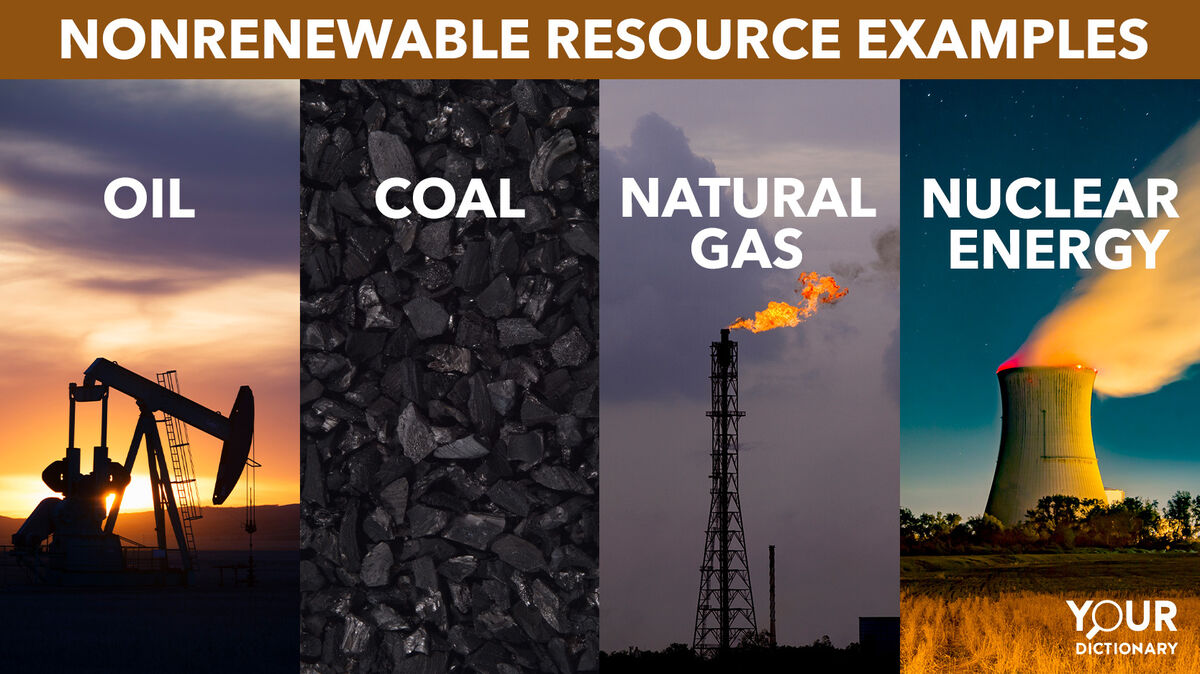
Nonrenewable resources are resources that have a limited supply. These resources can’t be replaced by natural means at a pace that meets its consumption. A lot of fossil fuels, such as oil, are nonrenewable resources. In other words, if people keep using them, they will eventually run out. Learn more about these resources through examples of nonrenewable resources.
Understanding Nonrenewable Resources
The major nonrenewable resources include oil, natural gas, coal, and nuclear energy. In many examples of nonrenewable resources, the supply comes from the Earth itself. However, since it typically takes millions of years for these to develop, the resources are finite. Take a look at the two types of nonrenewable energy in more depth.
Nonrenewable Resources Examples: Fossil Fuels
The most well-known nonrenewable resource is fossil fuels. These are derived from organic matter trapped between layers of sediments within the Earth for millions of years. Organic matter, typically plants, has decomposed and compressed over time, leaving what is known as fossil fuel deposits.
These deposits and the materials produced from them tend to be highly combustible, making them potent energy sources. They’re difficult to obtain because they’re typically retrieved through drilling or mining.
Crude Oil/Petroleum
Crude oil is a nonrenewable resource that builds up in liquid form between the layers of the Earth's crust. It’s retrieved by drilling into the ground and ocean floor and pumping the liquid out. The liquid is then refined and used to create many different products.
- Crude oil is a versatile fuel used to produce things like plastics, artificial food flavorings, heating oil, petrol, diesel, jet fuel, and propane.
- The top three oil-producing countries are the United States, Saudi Arabia and Russia.
Petroleum deposits that begin to form underground are known as oil sands, bitumen or bituminous sands. Bitumen is too thick to be pumped under natural conditions. Scientists refer to it as cold molasses. With special machinery, much of this is being mined in Alberta, Canada, serving as a major energy source for Canadians and people worldwide.
Natural Gas
Natural gas gathers below the Earth's crust and, like crude oil, must be drilled for and pumped out. Methane and ethane are the most common types of gases obtained through this process.
- These gases are most commonly used in home heating as well as gas ovens, stoves and grills.
- Russia, Iran and Qatar are the countries with the largest recorded natural gas reserves.
Coal
Coal is the last of the major fossil fuels. Created by compressed organic matter, it is solid as a rock and is obtained via mining.
- Coal is most typically used in home heating and the running of power plants.
- Out of all countries, China produces the most coal by far. In fact, it has been the largest producer of coal for the last three decades, producing about 3.7 billion tons of coal in 2019.
Examples of Nonrenewable Resources: Nuclear Fuels
The other form of nonrenewable resources used to produce energy, nuclear fuels, is primarily obtained through the mining and refining of uranium ore.
Uranium Ore
Uranium is a naturally occurring element found within the Earth's core. Most uranium deposits occur in small quantities, which miners gather, refine and purify. Once gathered, the uranium is brought together and compounded into rods. The rods are then submerged into tanks of water.
When it reaches critical mass, uranium begins to break down and release energy, which heats the water it is immersed in. The breaking down is known as fission. The heated water then creates pressure. This pressure drives the turbines that generate electricity in nuclear power plants.
Nonrenewable vs. Renewable Resources
While nonrenewable resources will eventually run out, you can find an alternative. Renewable resources are those that can renew within a short period of time. Renewable energy sources include wind, water and sun energy. These resources are limitless. Therefore, there is a push to lessen the reliance on nonrenewable resources and make renewable resources more accessible.
Understanding Renewable Resources
Relying heavily on an energy source that could potentially run out seems like a dangerous endeavor, right? The truth is, it's not known how long resources like oil will be readily available for consumption. That’s why scientists are working to develop alternate fuels. Here’s a closer at the Earth’s renewable resources.